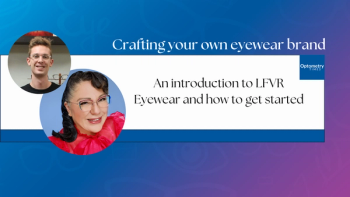
What happened in optometry this week: January 22-January 26
Catch up on what happened in optometry during the week of January 22-January 26.
Catch up with what Optometry Times shared this week:
US optical industry size estimated at $65.6 billion, per The Vision Council 2023 report
By Jordana Joy, Associate Editor
An increase in optical-related purchases in 2023 led to a slight growth in the optical industry in the past year, according to a new report released by The Vision Council.
The Market inSights 2023 report, released January 23, found that the total optical market value for the past year is estimated around $65.6 billion, with 93% of US adults regularly wearing some form of eyewear, according to a news release. Noteworthy industry growth includes an increase in the number of eye exams conducted and prescription eye care products sold.
Contact lenses to diagnose glaucoma in the works
By David Hutton, Managing Editor, Ophthalmology Times
The new contact lenses contain micro-sensors which monitor changes in IOP over a period of several hours, sending the data collected wirelessly so it can be analyzed by an eye care provider and a diagnosis given.
Oculomics and oculometrics: Using the eye as a biomarker for neurodegenerative disease
By Jacqueline Theis, OD, FAAO
Oculomics and oculometrics are part of an emerging field that looks at using the eye and eye movements as a biomarker for systemic and neurologic health. This article will review some of the recent findings correlating ocular structures and eye movement function with neurologic and cerebrovascular disease and discuss the future of eye care in the neurologic space.
Cut out the cigarettes for the sake of the optic nerve
By Benjamin P. Casella, OD, FAAO
It is widely accepted that the smoking of cigarettes can cause damage to pretty much every tissue in the human body, and it It has been implicated as a risk factor for several eye diseases, such as age-related macular degeneration. What about a link between smoking with regards to and What about a link between smoking with regards to and
EnVision Summit 2024: Incorporating diversity, family into eye care meetings with Dr Bonnie An Henderson
By Bonnie An Henderson, MD; Emily Kaiser Maharjan, Assistant Managing Editor; Jordana Joy, Associate Editor
With EnVision Summit 2024 on the horizon, the meeting's cofounder Bonnie An Henderson, MD, outlines its purpose of family inclusion and highlighting diverse backgrounds. She sat down with Optometry Times to share what's new at this year's meeting, running from February 16 to 19 in Puerto Rico.
Advancing multifocal contact lens design with biometry
By Osama Said, OD
Since multifocal contact lenses first came to market in the 1980s, they have faced a number of challenges and drawbacks that limited their adoption and satisfaction among wearers and providers. In the early decades, the design of multifocal contact lenses did not address individual variations in the lens wearer’s ocular biometry, metrics such as pupil size and axial length. The lack of biometric customization contributed to suboptimal visual performance, increased visual disturbance, and to lens wearer dropout.
Compared to the multifocal contact lenses of the past, today’s premium lenses are intricately designed to ensure that lens wearers enjoy both comfort and an optimized visual experience. This is because, among other advancements, today's designs combine superior lens materials and sophisticated optical designs, and some even incorporate patient biometrics data.
Newsletter
Want more insights like this? Subscribe to Optometry Times and get clinical pearls and practice tips delivered straight to your inbox.


















































.png)


